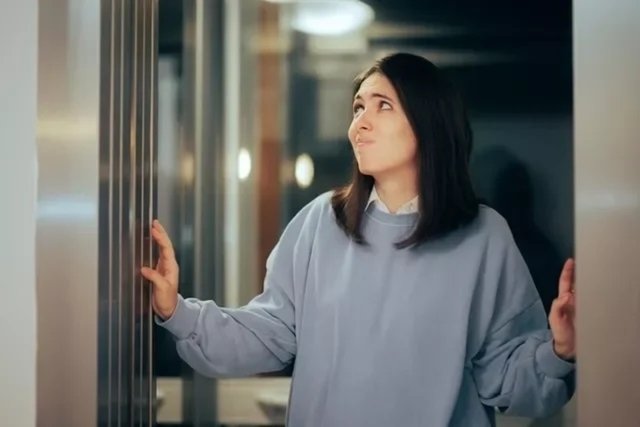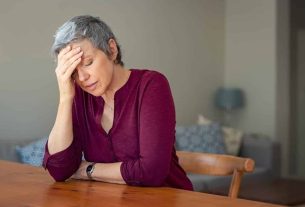Claustrophobia is the irrational fear of closed spaces, such as an elevator or closed rooms, for example. This type of phobia can cause symptoms such as shortness of breath, dry mouth and feelings of fear, which can occur in children, adolescents, adults or the elderly.
Some people may experience anxiety, while others may develop a panic attack when faced with a claustrophobic situation. This disorder can be caused by a traumatic event during childhood or by having a relative who has claustrophobia.
In the presence of signs and symptoms of claustrophobia, it is important that a psychologist or psychiatrist is consulted so that an assessment can be carried out and the most appropriate treatment can be initiated.

Claustrophobia symptoms
The main symptoms of claustrophobia are:
- Fear, anguish or anxiety;
- Sweating;
- Shortness of breathe;
- Tremors or chills;
- Short breathing;
- Increased heart rate;
- Dry mouth;
- Chest pain;
- Headache or dizziness;
- Confusion and disorientation.
In some cases, the person believes that the walls are moving, the ceiling is lowering and the space is shrinking, for example, which encourages the onset of symptoms.
The symptoms of claustrophobia can also lead to excessive and constant worry related to fear, which can develop into generalized anxiety disorder. Learn more about anxiety disorder.
What can cause symptoms
Claustrophobia symptoms can be triggered by any closed environment and/or with little air circulation, such as elevators, tunnels, caves, means of transport, small houses and/or with very low ceilings.
Furthermore, undergoing an MRI, for example, can also cause symptoms of claustrophobia, as the person needs to enter a small piece of equipment. In this case, it is important to talk to the doctor to check the possibility of using a sedative. See more about the main types of phobia.
Don’t ignore the signs your body is giving you!
Treatment for claustrophobia
Treatment for claustrophobia can be done through psychotherapy sessions, in which exposure therapy can be carried out, in which the person must face a situation that causes the phobia and describe the experience, or cognitive-behavioral therapy, in which a change is made in the way one thinks, feels and behaves.
Furthermore, the psychiatrist may recommend the use of anxiolytic and antidepressant medications that can help reduce phobia symptoms and the risk of developing depression, as these individuals tend to isolate themselves from the world in places they believe to be safe. like the room itself.
The treatment is time-consuming, but achieves good results, and therefore claustrophobia can be controlled, which will only be achieved when the treatment is followed correctly.
Psychotherapy sessions are fundamental, as they aim to directly or indirectly expose people to situations in which they feel afraid, anxious and distressed, making them face their fear and start to feel better in the face of these situations.
Bibliography
- NHS. Claustrophobia. Disponível em: <https://www.nhs.uk/mental-health/conditions/claustrophobia/#:~:text=Claustrophobia%20is%20the%20irrational%20fear,places%20may%20reinforce%20the%20fear.>. Acesso em 20 jun 2023
- CLEVELAND CLINIC. Claustrophobia (Fear of Enclosed Spaces). Disponível em: <https://my.clevelandclinic.org/health/diseases/21746-claustrophobia>. Acesso em 20 jun 2023



